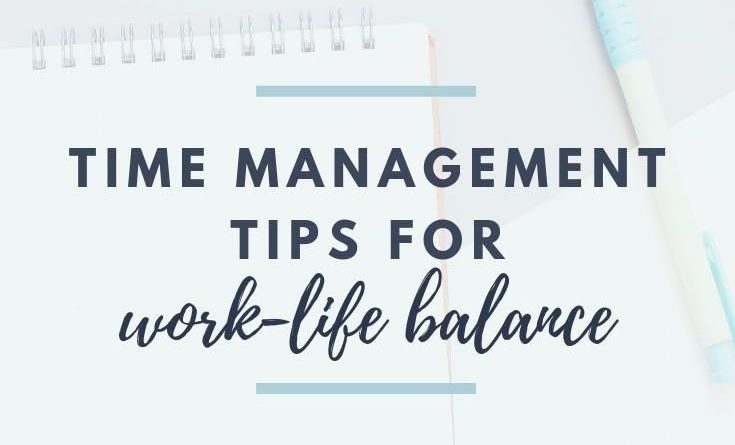Time Management Tips for Balancing Work and Personal Life
In today’s fast-paced world, finding a balance between work and personal life has become a significant challenge for many individuals. The constant demands of work often leave us feeling like there are not enough hours in the day to attend to our personal needs and relationships. However, with effective time management strategies, it is possible to strike a harmonious balance between work and personal life. In this blog post, we will explore practical time management tips that can help you achieve the elusive work-life balance you desire.
- Establish Clear Boundaries: Setting clear boundaries between work and personal life is crucial. Clearly define your working hours and communicate them to your colleagues and clients. Equally important is allocating dedicated time for personal activities and relationships. By creating boundaries, you ensure that each aspect of your life receives the attention it deserves.
- Prioritize and Delegate: Identify your top priorities in both your work and personal life. Focus on tasks that align with your long-term goals and values. Learn to delegate tasks that can be handled by others, both at work and at home. By prioritizing and delegating effectively, you can optimize your time and energy, reducing the risk of burnout.
- Embrace Time Blocking: Implement the practice of time blocking to allocate specific time slots for work and personal activities. Schedule dedicated blocks of time for focused work, family time, self-care, hobbies, and relaxation. By following a structured schedule that encompasses both work and personal commitments, you can ensure that you have time for all the important aspects of your life.
- Practice Mindful Transitions: Transitioning mindfully between work and personal activities is essential. When you finish work, take a few minutes to mentally shift gears and transition into your personal time. Engage in a mindfulness practice, such as deep breathing or a short walk, to clear your mind and be fully present in the next activity. Mindful transitions help you maintain focus and reduce stress.
- Embrace the Power of “No”: Learn to say no to additional work or commitments when your plate is already full. Prioritize your existing responsibilities and avoid overextending yourself. By setting boundaries and saying no to non-essential tasks, you create space for important personal activities and maintain a healthier work-life balance.
- Leverage Productivity Tools: Take advantage of productivity tools and apps to manage your time more efficiently. Utilize task management apps, calendar tools, or project management software to stay organized and track your progress. These tools can streamline your workflows and free up time for personal activities.
- Prioritize Self-Care: Make self-care a priority to maintain your physical and mental well-being. Engage in activities that help you relax, recharge, and reduce stress. This may include exercise, meditation, spending time with loved ones, pursuing hobbies, or any other activities that bring you joy and fulfillment. Taking care of yourself allows you to be fully present and engaged, both at work and in your personal life.
- Foster Open Communication: Openly communicate with your employer, colleagues, and loved ones about your need for work-life balance. Discuss any challenges or concerns you may have and explore potential solutions together. Open communication can lead to understanding, support, and adjustments that promote a healthier balance.
- Set Realistic Expectations: Set realistic expectations for yourself in both your work and personal life. Avoid the trap of perfectionism and the constant need to overachieve. Understand that there will be times when work demands more of your attention, and other times when personal matters require priority. Embrace flexibility and adaptability to accommodate the ebb and flow of life.
- Regularly Evaluate and Adjust: Regularly evaluate your work-life balance and make adjustments as needed. Reflect on what is working well and what needs improvement. Assess whether your current commitments align with your priorities and make necessary changes. Regularly reevaluating and adjusting your approach is vital to maintaining a healthy balance over the long term.




